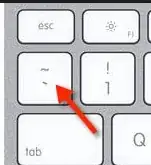I'm using FFmpeg on Windows where I need to insert an \r\n in a parameter itself.
ffmpeg … -headers "X-Test: Test\r\nX-Test-2: Test 2\r\n" …
While this will work fine under Linux and such, it does not work from a normal Windows 10 command prompt. It also does not work under Bash under Windows. In both cases, a literal \r\n (backslash, r, backslash, n characters) are sent in.
I have tried using Alt+13 Alt+10, and while this appeared to insert characters, they were interpreted as 0xE299AA 0xE29799 by FFmpeg.
This question is similar to How can I insert a new line in a cmd.exe command?, except that I'm not tied to cmd.exe. I'm happy to use any shell as long as I can use it under Windows, if there are any suggestions. Is this possible via Powershell somehow? Or, maybe by putting my parameters in a text file and bringing it in as a parameter value?

